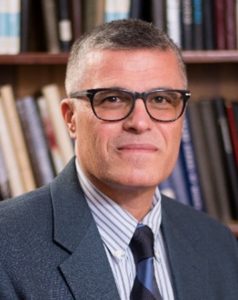Direct time domain simulation of nonlinear microwave devices characterized by their X-parameters
The finite-difference time-domain (FDTD) simulation technique is a versatile and extensible approach to simulation of RF, communications and microwave devices. The development of high-quality absorbing-boundary formulations, as well as the increasing availability of high-performance computing hardware including graphics processing units (GPUs) have further increased the FDTD technique’s applicability to a wide variety of problems. In particular, simulations involving very complex 3D geometries, inhomogeneous media such as tissue or soil, or wide signal bandwidths are readily addressed using the FDTD technique.
The FDTD technique is further extended by a number of formulations which allow passive and active electronic circuit components to be simulated in situ, within the FDTD domain. Current sources, resistors, capacitors, and inductors may be simulated using their constitutive current-voltage (I-V) properties. Semiconductor devices may also be simulated, using formulations based upon either empirical or circuit-theory models.
A major advance in semiconductor characterization and simulation has been the advent of polyharmonic distortion models, such as the X-Parameters. Whereas arbitrary linear loads may be simulated within the FDTD by means of their S-Parameters, there does not exist a comparable method for direct FDTD simulation of a device defined by its X-Parameters. We present here a technique for extracting X-Parameter information from FDTD simulation results, as well as a method for simulating a device within FDTD when its X-Parameters are known. For FDTD simulation of nonlinear devices, our method has the following advantages. First, it is of lower computational complexity than some FDTD semiconductor models, which require iterative numeric solution of nonlinear equations. Second, it provides direct compatibility between FDTD and the X-Parameters, without the intermediary step of estimating a device’s circuit-theory-model parameters. Finally, simulation is carried out in one domain, without the iterative conversions between time and frequency domain which are required by harmonic-balance-based approaches.
Biography

Atef Z. Elsherbeni received an honor B.Sc. degree in Electronics and Communications, an honor B.Sc. degree in Applied Physics, and a M.Eng. degree in Electrical Engineering, all from Cairo University, Cairo, Egypt, in 1976, 1979, and 1982, respectively, and a Ph.D. degree in Electrical Engineering from Manitoba University, Winnipeg, Manitoba, Canada, in 1987. Dr. Elsherbeni joined the faculty at the University of Mississippi in August 1987 as an Assistant Professor of Electrical Engineering and advanced in rank to become the Associate Dean of the college of Engineering for Research and Graduate Programs. In 2013, he joined the Electrical Engineering and Computer Science Department at Colorado School of Mines as the Dobelman Distinguished Chair Professor. He was appointed as the Interim Department Head from 2015 to 2016 and the Electrical Engineering Department Head from 2016 to 2018. He was selected as Finland Distinguished Professor by the Academy of Finland and TEKES from 2009 to 2011 and as a Distinguished Lecturer for IEEE Antennas and Propagation Society for 2020-2023. Dr. Elsherbeni is an IEEE life fellow and ACES fellow. He is the Editor-in-Chief for ACES Journal.
